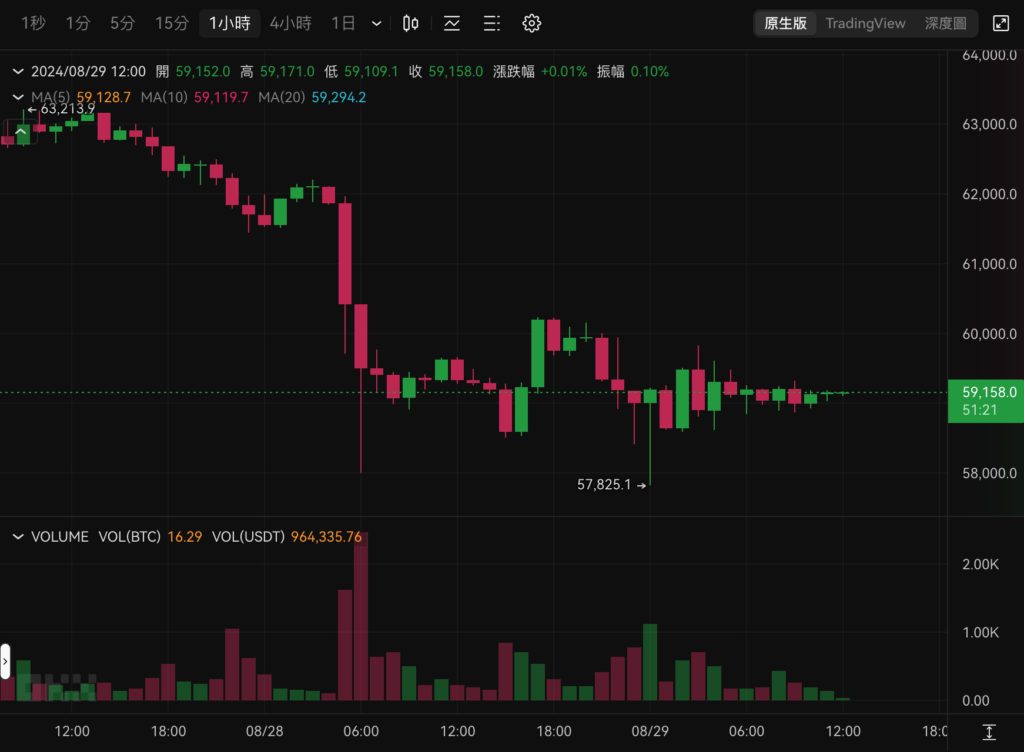After Bitcoin hit $58,000 yesterday, it dropped further to $57,825 this morning, quickly clearing out the bulls. At the moment of writing, it is temporarily trading at $59,158, continuing to fluctuate.

QCP Capital: Pullback will be short-lived
Since Bitcoin hit a record high of $73,000 in March this year, it has always lacked upward momentum. Multiple market declines have gradually extinguished investors' enthusiasm, making people doubt whether Bitcoin is expected to usher in a new round. The outbreak?
Against this background, digital asset trading company QCP Capital released a latest report on Telegram yesterday (28th) stating that under the background that the U.S. Federal Reserve (Fed) has relaxed its message that it is likely to start cutting interest rates in September, the current stock market and crypto All currency market pullbacks will be short-lived:
Ball has been quite dovish in his recent comments, and he has made it clear that now is the time to lower interest rates.
Although there are only three interest rate meetings left this year, the market currently believes that there will still be four interest rate cuts in 2024.
We believe that any current pullback in stocks and cryptocurrencies will be short-lived and that we are on the cusp of rising global liquidity that will ultimately push risk assets higher as Powell and the Fed initiate a rate cut cycle.
JP Morgan: U.S. financial markets will face liquidity crunch
However, contrary to QCP Capital’s view, Nikolaos Panigirtzoglou, a cross-asset market strategist at JPMorgan Chase, recently said that although the M2 money supply has rebounded in recent months after shrinking in April, this rebound may be temporary. Sexually, liquidity in U.S. financial markets still tends to tighten:
US liquidity and M2 money supply have rebounded in recent months after contracting in April. This rebound challenges our previous forecast, but we still believe it is a reasonable forecast and the recent rebound may be temporary.
Nikolaos continued to point out that the recent rebound in US liquidity is due to the following two factors:
- The U.S. Treasury Account Balance (TGA) fell below $850 billion, a figure expected by the end of September;
- The Federal Reserve's reverse repurchase agreement (Reverse Repo) was reduced to less than $300 billion in August.
However, as these two key factors subside, the Fed's continued quantitative tightening (QT) and the slow growth of US bank lending may cause US liquidity and M2 money supply to contract again:
With these two key factors likely to have ended, the Fed's continued quantitative tightening (QT) and the slow growth of US bank lending may cause US liquidity and M2 money supply to contract again, possibly similar to the situation in 2022 resemblance.
This expected contraction represents a significant change from the past year. Especially from the end of April 2023 to the end of March 2024, during these 11 months, the U.S. money supply increased by US$1.3 trillion, mainly due to a decrease of US$1.8 trillion in the Federal Reserve's reverse repurchase agreement.
This reduction resulted in a large amount of liquidity being injected into the market, because when the Fed would reduce its reverse repurchase operations, the amount of money in the market would increase, thereby increasing the money supply.
How the liquidity of the U.S. market will affect the market in the future deserves investors' continued attention.






